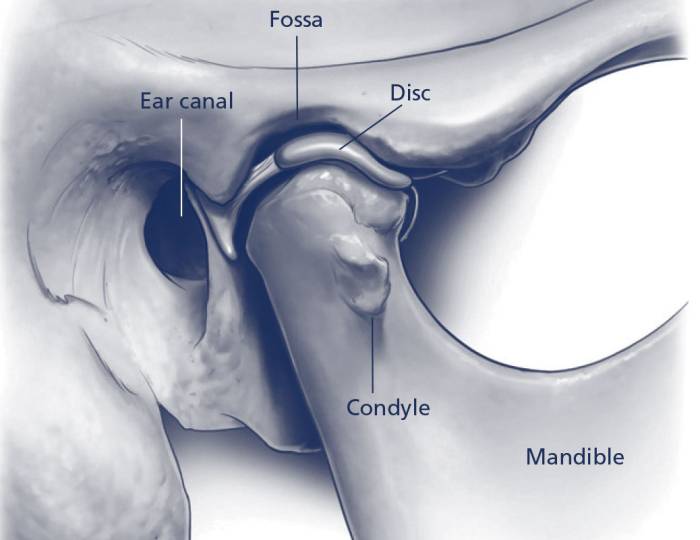Our Services
Temporomandibular
Joints (TMJ)

Located where the lower jaw attaches to the base of the skull, the temporomandibular joints (TMJs) allow the mouth to open and close, and move from side to side. When you place your fingers in front of your ears and open your mouth, you can feel these joints move. Muscles attached to the TMJ control its position and jaw movements during talking, chewing and swallowing.
A TMJ disorder can affect one or both TMJs, and can cause pain, locking, facial pain and headache. Although TMJ disorders are fairly common, of every 100 people with a TMJ disorder, only about five will need surgery. Non-surgical treatments can be very effective.
The cause of a TMJ disorder is not always known. Most symptoms are caused by joint degeneration or injury to the jaws. Chronic TMJ pain and dysfunction can be difficult to treat.
TMJ Surgical Procedures
The main reasons for surgery are that the TMJ disorder is not responding to non-surgical treatment and symptoms of chronic pain and dysfunction are interfering with the patient’s normal activities and enjoyment of life. The four types of surgical procedures to treat a TMJ disorder are:
Arthroscopy
A miniature telescope is inserted into the TMJ to see and treat any defects or pathology.
Arthrocentesis & lavage
The TMJ is washed out with a special solution to reduce inflammation and pain, and to improve jaw function.
Arthrotomy
This is open surgery of the TMJ that allows the surgeon to examine the joint, perform various corrective procedures to the joint, and biopsy tissue, if necessary.
Total Replacement
Similar to other joints, a TMJ may become dysfunctional to the point where it should be replaced with a prosthesis made of metal alloys and synthetics.
What you need to know
Your Medical History
Your surgeon needs to know your medical history to plan the best treatment for you. Tell your surgeon about ALL medicines that you take and other health problems you may have. Some may interfere with treatment, surgery, anaesthesia and recovery.
A Decision To Have A Surgery
As you make the decision whether to have non-surgical or surgical treatment, be sure that you understand the risks, benefits and limitations of the treatment options. Only you can decide if surgery is right for you. If you have any questions, ask your surgeon.
Anaesthesia
Surgical treatment of a TMJ may be performed under local anaesthesia, local anaesthesia with conscious sedation, or general anaesthesia. Your surgeon will explain more about the type of anaesthesia that is best in your case.

Possible Risks & Complications
Modern surgical techniques and prostheses have greatly improved the surgical outcomes.
However, there are risks of complications, as with all types of surgery. Risks of complications and additional information are more fully outlined in the complete ANZAOMS patient education pamphlet and should be discussed with your oral and maxillofacial surgeon.
Source: Australian and New Zealand Association of Oral and Maxillofacial Surgeons

